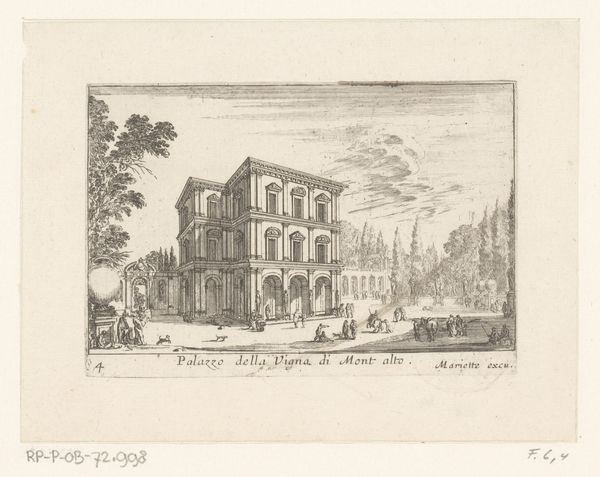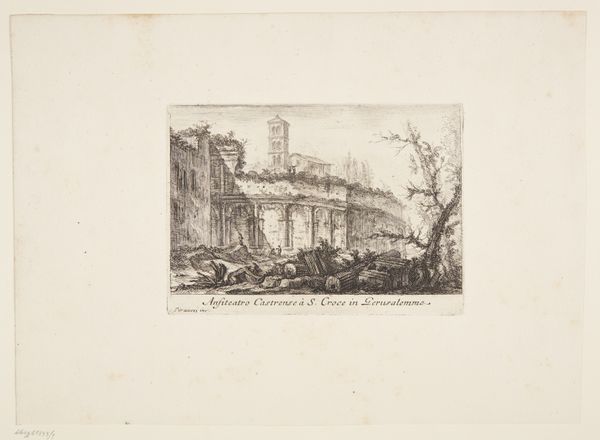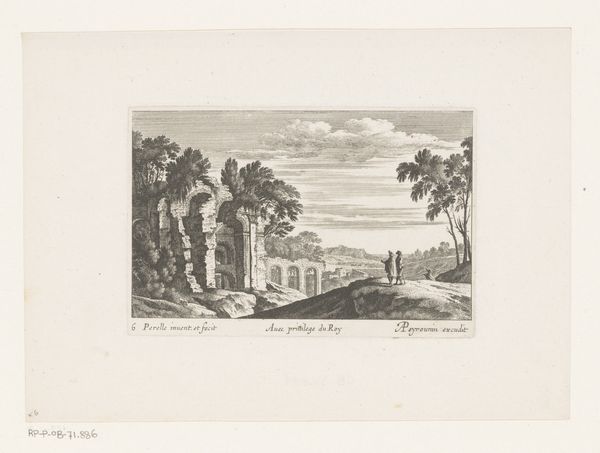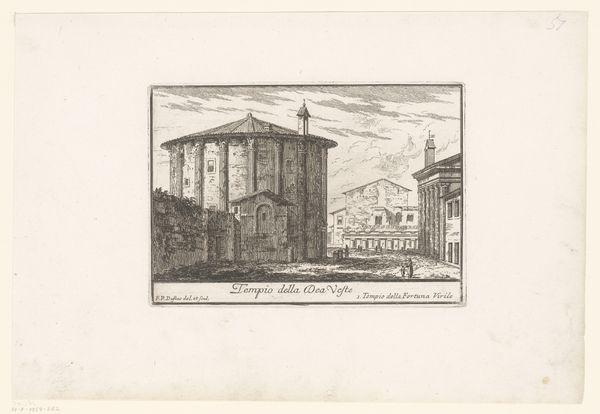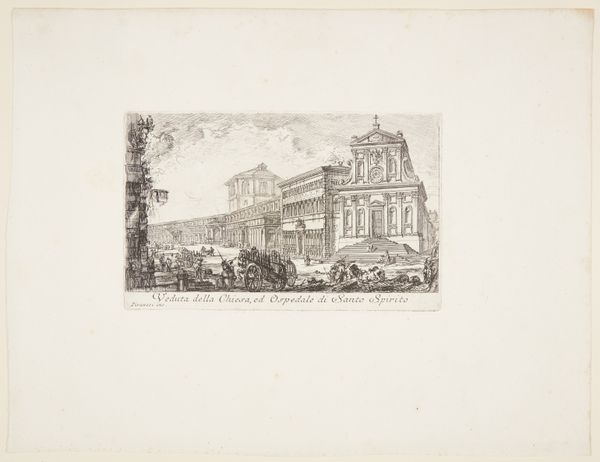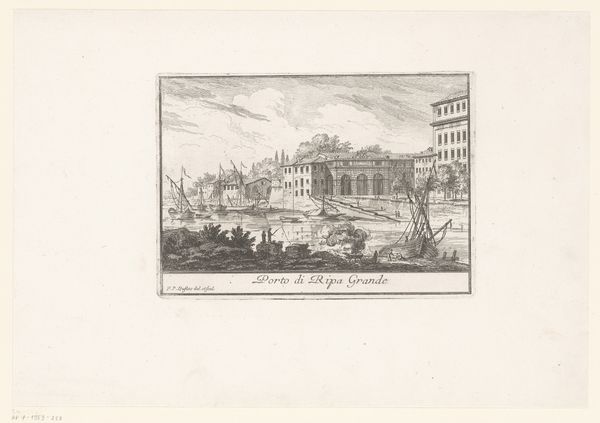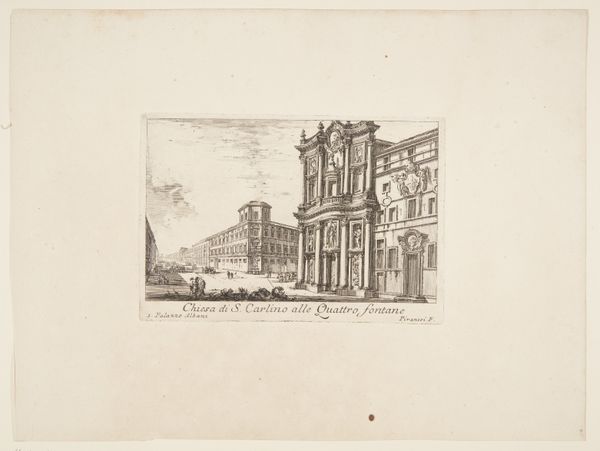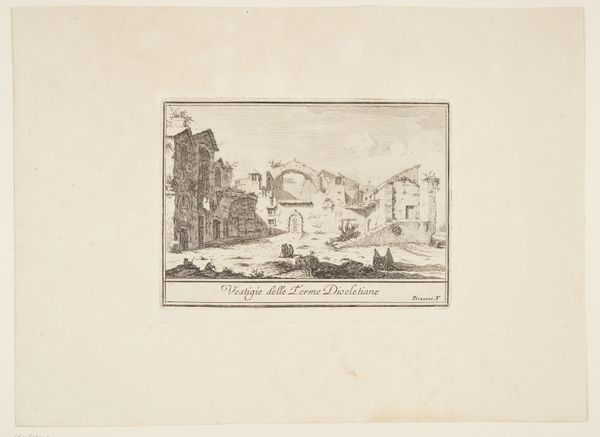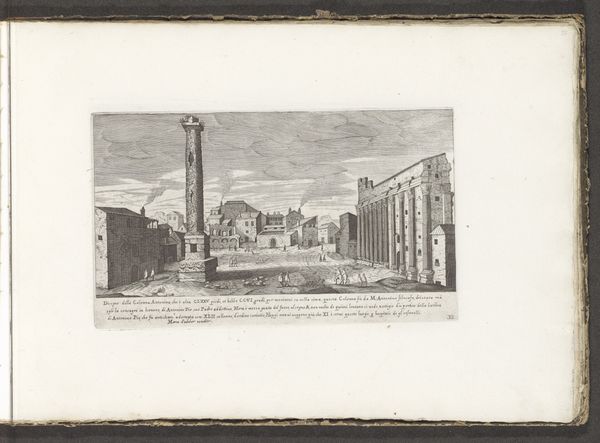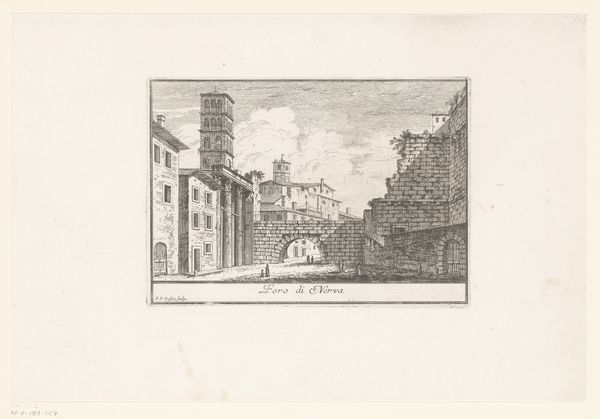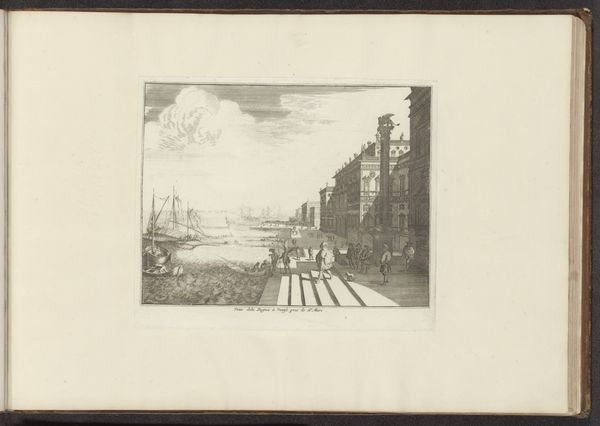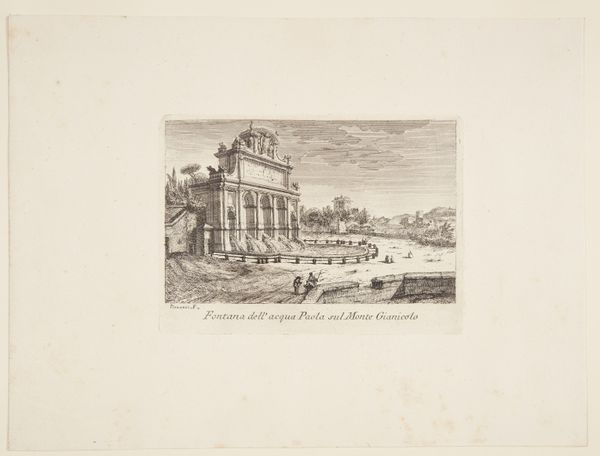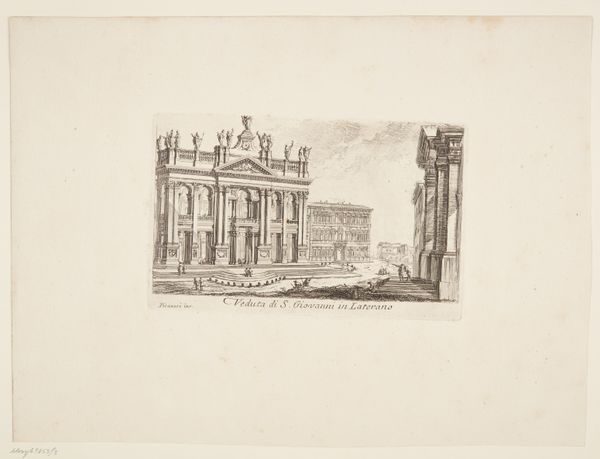
Dimensions: height 130 mm, width 186 mm
Copyright: Rijks Museum: Open Domain
Curator: This etching, titled "Aquaduct Aqua Claudia te Rome," was created by Giovanni Battista Piranesi around 1763. The scene depicts the ancient Aqua Claudia aqueduct. The print itself is housed at the Rijksmuseum. Editor: It immediately strikes me as a reflection on the weight of time and civilization. You've got this colossal structure, partially crumbling, yet still dominating the landscape, with these tiny figures scattered below suggesting how monumental its scale must have felt and how ordinary people carry on living amidst these ruins. Curator: Indeed. Piranesi was fascinated with the grandeur and enduring nature of Roman architecture, often contrasting it with the ephemerality of human life. Notice the precise details in his depiction of the aqueduct’s stonework, each stone meticulously etched, seemingly conveying a sense of timelessness, strength, and also perhaps hubris. The archway in architecture symbolizes a portal or threshold, in this scene linking an era of advancement to the potential dangers of decline, as Rome moves to stagnancy. Editor: It's impossible to view it without considering the social implications too. The aqueduct represents power and control—literally, the control of water, a fundamental resource. Whose access did it prioritize, and whose did it restrict? How did its construction impact the surrounding communities, and at what cost? Curator: A pertinent question. Water access certainly reflected existing social structures. And yet, in Piranesi’s work, there's also a clear fascination with ruin as a romantic concept. We are allowed, centuries later, to examine the structures with an almost critical eye for what may have brought such empire crumbling. Editor: True. It also points to our continuous attempts at rewriting history to make a claim in the current societal landscape, doesn't it? Looking back through the past always recontextualizes how we navigate moving forward. A broken structure is more complex than a full one; there's a beauty there but also decay, like the arc of life reflected within an infrastructure that carried so much more. Curator: The print certainly presents that intersection. It's an evocative meditation on how ancient structures speak to our present anxieties and aspirations. Editor: It also makes me ponder the social costs often hidden beneath monumental achievements and question who exactly gets to decide which legacies get immortalized in the first place. Aquaducts stand tall to present an ease to survival, though often at a social cost. It allows the question of what survives and to whom we attribute those relics to linger far beyond a structural appreciation.
Comments
No comments
Be the first to comment and join the conversation on the ultimate creative platform.
